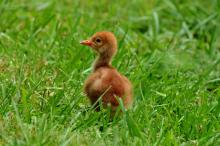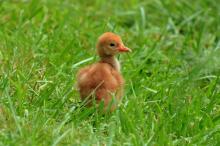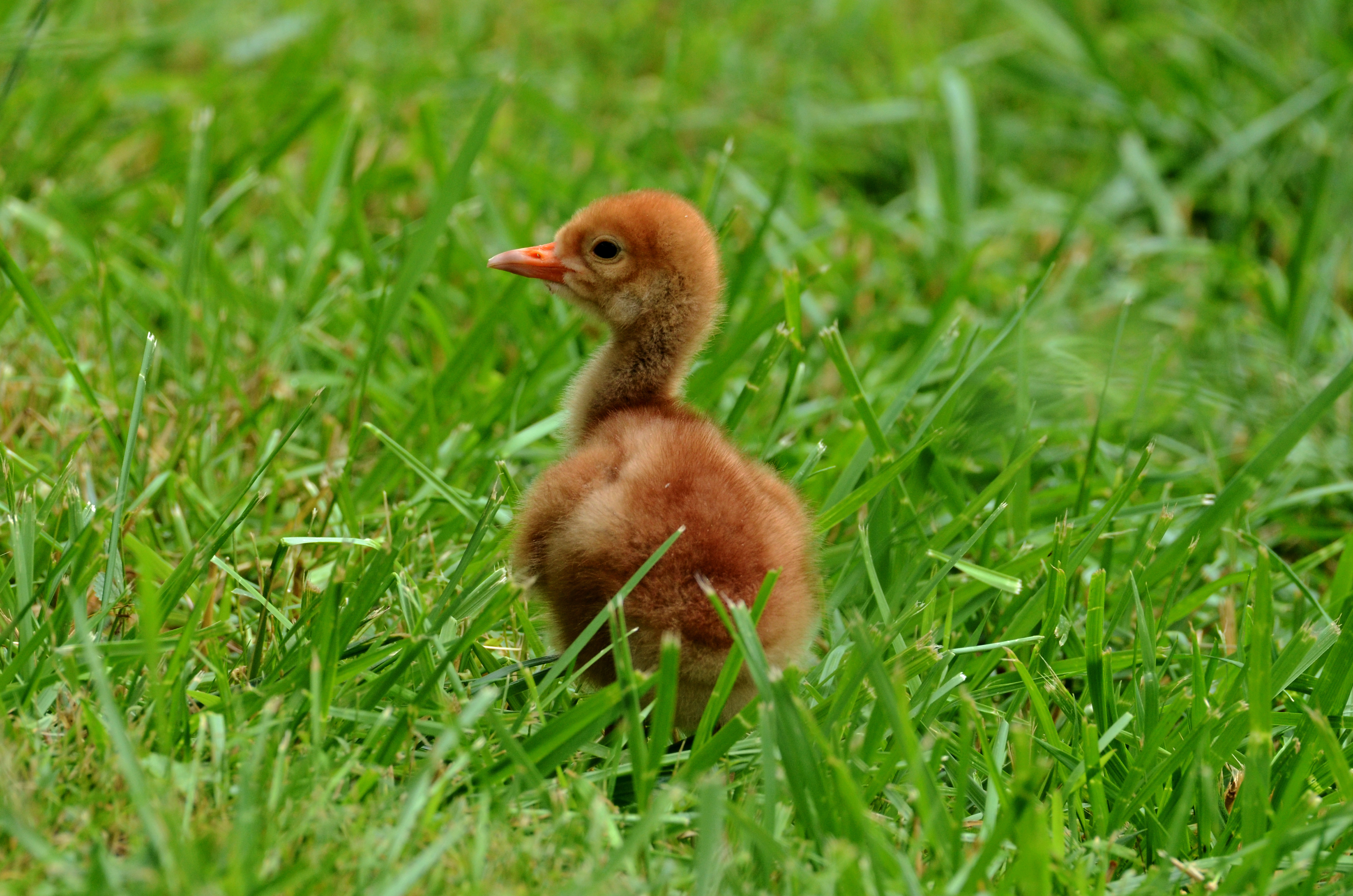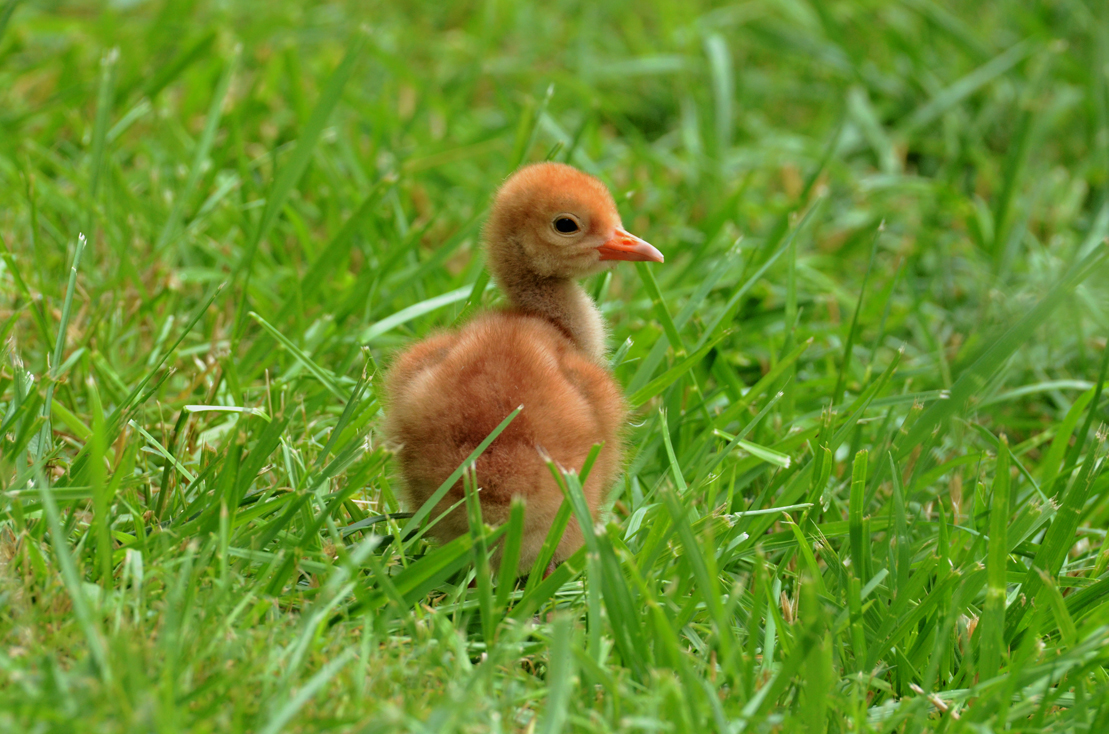Keepers Help Vulnerable Hooded Crane Hatch at the Smithsonian Conservation Biology Institute
Surrogate Parents Will Raise the Chick
A small beak broke through one of the hooded crane eggs at the Smithsonian Conservation Biology Institute (SCBI) in Front Royal, Virginia, June 12. After a little assistance from keepers to break out of its egg, the chick has been bright, alert and responsive. This hooded crane chick is the second ever born at SCBI. Keepers are cautiously optimistic that the chick will continue to thrive, though the first seven days after hatching are the most critical.
The chick is the result of artificial insemination. Keepers artificially inseminated an 18-year-old-crane named Liza with her mate, 29-year-old Louie’s, sperm. Louie and Liza are unable to breed naturally and live at SCBI because keepers there specialize in using assisted reproduction techniques to breed cranes with behavioral or physical issues that prevent them from breeding naturally. Liza and Louie are first-time parents, so to increase the chances that the chick will survive, keepers placed it with a more experienced pair to foster it. Mr. Crane and Tempest, the chick’s foster parents, hatched and raised the only other hooded crane chick to ever hatch at SCBI in 2016.
The hooded crane chick hatched 29 days after it was laid. Hooded crane eggs are typically incubated by both parents for 27 to 30 days. Keepers intervened to help the chick hatch after they saw it had difficulty breaking out of its egg completely. Typically, crane chicks will use their egg tooth to tear the inner membranes and break the outer shell most of the way around the top of the egg. Once the egg is weakened, the chick pushes itself out. This chick stopped pecking after making a penny-sized hole that allowed it to see out of the egg. Keepers swooped in and carefully cracked some of the outer shell and cut through the underlying membranes, which had begun to dry out and toughen, to help the chick break free from the egg.
After keepers cut the dried membranes, they placed the egg back in Mr. Crane and Tempest’s nest to allow it to emerge naturally.
Keepers are carefully watching the chick to ensure it is eating, drinking and swimming. Hooded cranes live in wetland habitats in the wild and their yards at SCBI have large ponds to mimic wetlands and give chicks the opportunity to swim. The chick can grow up to an inch a day during its peak growth period and will fledge at 75 days old.
Hooded cranes are classified as vulnerable according to the International Union for Conservation of Nature. SCBI is now home to nine of the 32 birds in the Hooded Crane Species Survival Plan in zoos in North America. There are between 9,400 and 9,600 hooded cranes remaining in the wild. Many of the birds’ wintering grounds in Asia are threatened by development, agriculture or logging.
SCBI plays a leading role in the Smithsonian’s global efforts to save wildlife species from extinction and train future generations of conservationists. SCBI spearheads research programs at its headquarters in Front Royal, Virginia, the Smithsonian’s National Zoo in Washington, D.C., and at field research stations and training sites worldwide. SCBI scientists tackle some of today’s most complex conservation challenges by applying and sharing what they learn about animal behavior and reproduction, ecology, genetics, migration and conservation sustainability.
SCBI will provide updates on its hooded cranes, white-naped cranes and whooping cranes on Facebook, Twitter and Instagram with #KeepingUpWithTheCranes.
Related Species:
Image Gallery







